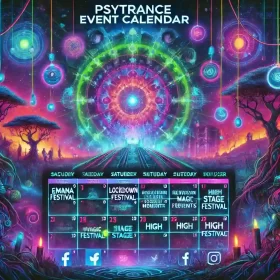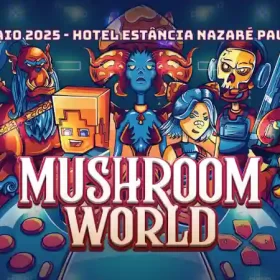Neuropharmacology 236 (2023) 109610
Available online May 27, 2023
0028-3908/© 2023 The Authors. Published by Elsevier Ltd. This is an open access article licensed under the CC BY (http://creativecommons.org/licenses/by/4.0/).
Psychedelics: Threshold of a Therapeutic Revolution
SUMMARY
This Special Issue of Neuropharmacology on psychedelics provides a timely and comprehensive update on the progress made since the previous issue of Neuropharmacology, “Psychedelics: New Doors, Altered Perceptions.” Remarkable advances have been made in basic and clinical research on psychedelics in the five years since 2018.
It is based in part on the psilocybin-focused seminar series organized by the National Institutes of Health (NIH), USA, from April to June 2021, the “NIH Psilocybin Research Lecture Series.” The lectures included world-renowned experts, including scientists, physicians, clinical psychologists, and oncologists, as well as participants from other disciplines, such as patient advocacy, law, government science policy, and regulatory policy. To provide a global perspective, their contributions are complemented by reviews from some of the world’s most eminent scientists in the field.
The U.S. Food and Drug Administration (FDA) granted two breakthrough therapy designations to psilocybin for the treatment of treatment-resistant depression (TRD) in 2018 and major depressive disorder (MDD) in 2019, as well as to MDMA for the treatment of post-traumatic stress disorder (PTSD) in 2017. Clinical trials are ongoing to evaluate the therapeutic value of psilocybin in MDD and TRD, as well as other indications such as cancer-related anxiety and depression, anorexia, PTSD, substance use disorders, and various types of chronic pain.
The collaborators’ insights should help basic and applied science transition psychedelics from the laboratory to potential mainstream therapies. The implications are global, as FDA approval of these new drugs will increase international interest and efforts.
1. Guest Editors’ Foreword to “Psychedelics: Threshold of a Therapeutic Revolution”
This 2023 Special Issue of Neuropharmacology on Psychedelics provides a timely and comprehensive update on the progress made in the 5 years since the previous Special Issue (Psychedelics: New Doors, Altered Perceptions) published by Neuropharmacology. It would be no exaggeration to say that remarkable progress has been made in basic and clinical research on psychedelic drugs in the period since 2018.
This new Special Issue is largely based on a series of seminars on psychedelic substances with a focus on psilocybin, organized by the National Institutes of Health (NIH) in the US from April 22 to June 10, 2021, the “NIH Psilocybin Research Lecture Series” (see accompanying Editorial by Xi et al., 2023). The event featured world-renowned experts in the field, including scientists, physicians, clinical psychologists, and oncologists. Participants also came from additional disciplines in this rapidly growing field of research, including those representing patient advocacy, law, government science policy, and regulatory policy.
This Special Issue was prompted by an expression of interest from the NIH Lecture Series program panel to publish articles based on the lectures, appropriately updated for the journal. To provide a global perspective on the status of psychedelic research and development, the NIH Lecture Series contributions have been supplemented by invited reviews written by some of the world’s most eminent scientists in the field.
To date, the U.S. Food and Drug Administration (FDA) has granted two breakthrough therapy designations to psilocybin: one for treatment-resistant depression (TRD) in 2018 and a second for major depressive disorder (MDD) in 2019, as well as MDMA for the treatment of post-traumatic stress disorder (PTSD) in 2017. Clinical trials are currently underway to evaluate the therapeutic value of psilocybin not only in MDD and TRD, but also in other indications, such as cancer-related anxiety and depression, anorexia, PTSD, substance use disorders, and various types of chronic pain.
The new insights contained in the collection of expert reviews in this Special Issue aim to provide a clear and critical assessment of the advances and challenges in psychedelic drug development. The contributors’ insights are designed to assist basic and applied science in the transition of psychedelic drugs from the laboratory to potential mainstream therapies, based on strategies likely to be initially evaluated in the US. The implications are global, as FDA approval of new psychedelic-based medicines will inevitably increase international interest and efforts.
The reviews in this Special Issue are divided into sections covering, firstly, Policy, Ethics and Legal Issues, Regulatory Aspects of Drug Development, Basic Research, Clinical Research and Therapeutic Applications.
2. Policy, Ethics and Legal Issues
The section begins with a review by Belouin et al. (2022) of the range of policy considerations that need to be addressed to enable equitable access to psychedelic medicines, should they become available to patients. Psilocybin and MDMA could receive full FDA approval within a few years, with similar regulatory submissions being considered simultaneously in several other countries. The authors discuss the safe and ethical use of psychedelics in relation to practice standards, consumer protection, development of data standards, safeguarding access, and community education, in anticipation of potential FDA decisions on the use of psychedelic drugs as essential contributors to innovative mental health therapies. Given the complexity of the issues, the authors discuss how a “real-world” harm reduction framework could be co-created through a government-sponsored public-private partnership, where stakeholders would engage to develop and disseminate best practices and policies to promote and protect public health.
The safe use of psilocybin-facilitated psychotherapy in vulnerable populations is considered by Ortiz et al. (2022). Vulnerable populations bear a disproportionate burden of mental health problems but have been largely neglected in the clinical literature on psilocybin. The authors address these concerns by detailing the challenges and opportunities of evaluating psilocybin-facilitated psychotherapy in such populations, including recruitment strategies, appropriate communication and assessment of subjective effects, building therapeutic alliances, multicultural competence, and flexible study designs.
New ethical and policy issues that need to be addressed for the use of psychedelics in psychiatric indications are critically discussed by Smith and Appelbaum (2022). The use of classical psychedelics as licensed pharmaceuticals raises numerous ethical and policy challenges in relation to the current limitations of the evidence base on the use of these potent pharmacological compounds. These issues are influenced by the psychoactive properties of psychedelics, their prior use in unregulated settings, their rapid commercialization, and the means and speed with which they are being transferred from Schedule 1 controlled drugs in the US to legalized use.
Psilocybin is the most researched of the classical psychedelics and also the furthest along in terms of progress in clinical development and the FDA drug approval process. Marks (2022) describes and critically discusses the legal complexities that will accompany the launch of psilocybin in the US as a licensed pharmaceutical product. He covers state and local legislation on psychedelics in 5 broad categories: decriminalization, supported adult use, medical use, clinical research, and policy analysis.
Sensationalism, exaggeration, and misinformation about psychedelic use in social and mainstream media are a reality. Sellers and Romach (2023) wrote a scathing critique detailing the often misleading briefings given by drug developers and social media platforms that exaggerate the benefits and downplay the problems psychedelics have encountered in clinical development. The authors also posit that it may be feasible to circumvent many of the scientific, clinical, and regulatory challenges associated with high-dose psychedelic use through low-dose or microdose treatment regimens. Furthermore, such treatment options would be logistically simpler and more cost-effective than the intensive high-dose psychotherapy model, thereby increasing the availability of psychedelic therapies to all individuals in need of treatment.
3. Drug Discovery and Development
Naturally occurring psychedelic compounds have been used in traditional healing practices for centuries, and their transition to mainstream pharmaceutical development has provided an accelerated path to drug approval and commercialization. For example, the FDA has determined that some classic psychedelic substances (such as LSD, psilocybin, and MDMA), which have been extensively evaluated in animal experiments, clinical trials, and epidemiological studies, may be exempt from the need for new studies dedicated to substance abuse (Calderon et al., 2022). However, there are well-established safety concerns associated with classic psychedelics that will need to be addressed in the development of the next generation of psychedelics for medical use. David Heal et al. (2022) discuss nonclinical experimental approaches to detecting the psychedelic properties of new compounds and predicting their efficacy in clinical trials. They describe screening procedures to assess the safety and toxicity risks that these drug candidates may pose to humans during clinical development and later when marketed, as well as to assess their abuse and dependence potential.
This discussion is complemented by Calderon et al.’s (2022) review of considerations in assessing the abuse potential of classical psychedelics during drug development. These psychedelic compounds were placed in Schedule I when the US Controlled Substances Act (CSA) was introduced in 1970 because they were presumed to have a high potential for abuse and no established therapeutic use (Henningfield et al., 2022). The review by Calderon et al. (2022) details the experimental information that will be needed to support a recommendation to reclassify these psychedelic substances to less restrictive drug control categories, should any of them receive FDA approval.
Jack Henningfield has assembled a group of eminent scientific researchers, clinicians, and drug developers from leading academic institutions, the National Institutes of Health (NIH), and the Substance Abuse and Mental Health Services Administration (SAMHSA) to provide a holistic assessment of the abuse potential of psychedelic substances when considering the submission of New Drug Applications (NDAs) and the implications for the FDA’s CSA classification (Henningfield et al., 2022). The authors also critically assess the implications of the CSA for pharmaceutical research and development, the pathway to approval of psychedelic drugs, and their subsequent reclassification from Schedule I controlled substances in the US. Studies of human abuse potential, typically employed in the development of central nervous system (CNS) drugs, may be problematic for new psychedelic drug candidates with potent hallucinogenic effects, and alternative strategies are described.
4. Basic Research
Wulff et al. (2023) reviewed the preclinical models and experimental approaches used to explore the potential neurobiological actions of psychedelic drugs. The findings provide insights into the possible mechanisms underlying their immediate pharmacological effects, including receptor targeting and the activation of several downstream signaling cascades. They make assumptions about the biological processes responsible for the long-lasting symptom improvement induced by psychedelics. Potential mediators include changes in synaptic structure and function, network connectivity, gene expression, and suppression of inflammation. An improved mechanistic understanding of the actions of psychedelic drugs will aid their development for various therapeutic indications.
Given that serotonin is generally considered to produce pro-inflammatory effects, the highly potent anti-inflammatory properties of certain psychedelic molecules are one of nature’s great enigmas. Charles Nichols (2022) describes the initial discovery by his research group that specific psychedelics are potent anti-inflammatory and immunomodulatory agents in peripheral tissues. The author proposes that these psychedelic molecules represent a new class of anti-inflammatory compounds that will be steroid-sparing and effective at subbehavioral levels, with the potential to treat a variety of inflammatory diseases.
Mescaline derived from the peyote cactus has been used in traditional ceremonies for over 5,000 years. Although mescaline is one of the oldest known hallucinogens, it is a relatively under-researched and neglected psychedelic. Vamvakopolou et al. (2022) address this gap with a review of preclinical and clinical research findings, describing the pharmacology of mescaline as well as its behavioral and psychotropic effects.
5. Clinical Research
Psychedelic drugs may herald a revolution in the way pharmacotherapy is used in psychiatry and in a variety of non-psychiatric indications. The fact that natural psychedelics have been ingested by humans for millennia and extensively researched in laboratories has created the false belief that we understand everything important about these compounds, when in reality we do not. David Nutt and colleagues (2022) assess psychedelic drugs as therapeutic agents in terms of current knowledge and future directions for research. Growing evidence of transdiagnostic efficacy is prompting a reassessment of current diagnostic and symptom-specific approaches in psychiatry. The authors warn against the consequent large-scale investment in this area and the expansion of pharmaceutical companies. They emphasize the need for additional reliable research to define the neurobiological effects of classic psychedelics and the development of a new and improved generation of psychedelic drugs.
Although there is still no general consensus on the brain mechanisms underlying the complex effects of psychedelics, hypotheses have focused primarily on the actions of these drugs to rewire neural connections in higher brain regions. Aquil and Roseman (2022) take a different approach and discuss the importance of sensory dimensions in the brain dynamics, experience, and therapeutic effects of psychedelics. The authors present evidence from neuroimaging, pharmacology, and clinical psychology studies that psychedelic-induced sensory alterations play a key role in determining the psychedelic experience and therapeutic outcomes, and are not merely “epiphenomenal byproducts.”
Every collection of review articles needs at least one provocative and revolutionary idea to drive progress in the field. Robin Carhart-Harris et al. (2022) have put forward a highly innovative hypothesis on channeling, plasticity in psychopathology, and the therapeutic mechanism of psychedelics. The authors differentiate between two types of plasticity, an initial one, ‘TEMP’ for Temperature or Entropy Mediated Plasticity, and ‘channeling’ (referring to phenotypic stabilization). In this paper, they propose that ‘pathological’ phenotypes develop through channeling mechanisms as responses to adversity and associated stress or dysphoria. They suggest that TEMP, together with psychological support, may counter ingrained channeling.
6. Therapeutic Applications
Zia et al. (2023) discuss early research to determine whether psychedelics may be beneficial in the treatment of chronic pain conditions. Chronic pain is debilitating and negatively impacts the lives of a large proportion of the population. Furthermore, it is often unresponsive to analgesics and nonsteroidal anti-inflammatory drugs. The authors propose a more holistic approach to chronic pain management, including biopsychosocial interventions to address the emotional, psychological, and functional components of the condition. The strategies include key areas of research needed to answer the question of whether psychedelic compounds have sufficient benefit in chronic pain to gain regulatory approval.
In his commentary, Schindler (2022) summarizes the evidence on the therapeutic effects of psychedelic drugs in the treatment of headache and chronic pain disorders. Attention is focused on preventive effects, given the unique and long-lasting reductions in disease burden after limited doses of psychedelic drugs compared with conventional treatments. The results of the first controlled clinical trial of a psychedelic for the treatment of migraine are discussed, including the limitations of the trial. The overlap between the actions of psychedelic drugs and neurobiological pathology in headache and chronic pain disorders is also addressed, emphasizing the importance of distinguishing between acute and long-term effects. Safety issues are also covered, with emphasis on the contrast between historical use of psychedelics and more recent untested methods of self-administration.
Ross et al. (2022) discuss the use of psychedelic drugs as adjuncts to psychotherapy to treat psychiatric and existential distress in life-threatening and end-of-life conditions. Current treatments used in these patient populations, including medication and psychotherapy, have limited efficacy. The authors review efficacy findings from the first and second waves of psychedelic research and comment on future directions for research and implementation.
7. Conclusions
The 5-year period since our previous Special Issue on Psychedelics has seen an exponential increase in psychedelic research, accompanied by unprecedented levels of venture capital investment in this long marathon to bring classical psychedelics into approved clinical use. The contributors to this Special Issue have provided valuable and comprehensive insight into this rapidly evolving field of pharmacological research. The Editors would like to thank all authors for their time, effort, and excellent contributions.
Editors: David J. Heal, Sharon L. Smith, Sean J. Belouin, and Jack E. Henningfield.
Declaration of Interests and Exemptions
David Heal and Sharon Smith are shareholders and employees of DevelRx Ltd. DevelRx provides consultancy in the discovery and development of drugs to treat psychiatric, neurological and metabolic disorders. They specialise in advising pharmaceutical companies on drug abuse and dependence assessments and preparing regulatory submissions. DevelRx also advises on the development and approval of psychedelics and other natural products as novel therapeutic treatments. Professor David Heal and Dr Sharon Smith received no external financial support for the writing of this article, and no external commercial interests were involved.
Jack Henningfield is employed by PinneyAssociates, Inc., which provides scientific and regulatory support for new drug applications (NDAs) and risk management programs for a wide range of substances and products that act on the central nervous system, including psychedelics, new chemical entities, and alternative formulations and routes of administration, as well as dietary ingredient notifications, evaluation of cannabinoids, and noncombustible tobacco/nicotine products for FDA regulation. Dr. Henningfield received no external financial support for the writing of this article, and no external commercial interests were involved.
Sean Belouin has no conflicts of interest to declare. The views, opinions, and content of this publication are those of the CAPT authors Sean J. Belouin et al. and do not necessarily reflect the views, opinions, or policies of the U.S. Public Health Service, the U.S. Department of Health and Human Services, the Substance Abuse and Mental Health Services Administration (SAMHSA), the National Institutes of Health (NIH), the Food and Drug Administration (FDA), the Centers for Medicare and Medicaid (CMS), the U.S. Department of Justice, the Drug Enforcement Agency (DEA), the U.S. Department of Defense, the U.S. Department of Veterans Affairs, and/or the World Health Organization (WHO).
References
Aqil, M., Roseman, L., 2022. More than meets the eye: the role of sensory dimensions in psychedelic brain dynamics, experience, and therapeutics. Neuropharmacology 223, 109300. https://doi.org/10.1016/j.neuropharm.2022.109300. Published on November 9, 2022.
Belouin, SJ, Averill, LA, Henningfield, JE, Xenakis, SN, Donato, I., Grob, CS, Berger, A., Magar, V., Danforth, AL, Anderson, BT, 2022. Policy considerations supporting equitable access to responsible, safe, and ethical use of psychedelic medicines. Neuropharmacology 219, 109214. https://doi.org/10.1016/j.neuropharm.2022.109214. Published on August 13, 2022.
Calderon, SN, Bonson, KR, Reissig, CJ, Lloyd, JM, Galati, S., Chiapperino, D., 2022. Considerations in assessing the abuse potential of psychedelics during drug development. Neuropharmacology 224, 109352. https://doi.org/10.1016/j.neuropharm.2022.109352. Published on November 28, 2022.
Carhart-Harris, R.L., Chandaria, S., Erritzoe, DE, Gazzaley, A., Girn, M., Kettner, H., Mediano, PAM, Nutt, D.J., Rosas, F.E., Roseman, L., Timmermann, C ., Weiss, B., Zeifman, RJ, Friston, KJ, 2022. Channeling and plasticity in psychopathology. Neuropharmacology 226, 109398. https://doi.org/10.1016/j.neuropharm.2022.109398. Published on December 27, 2022.
Heal, D.J., Gosden, J., Smith, S.L., Atterwill, C.K., 2022. Experimental strategies for discovering and developing the next generation of psychedelics and entactogens as medicines. Neuropharmacology 225, 109375. https://doi.org/10.1016/j.neuropharm.2022.109375. Published on December 16, 2022.
Henningfield, JE, Coe, MA, Griffiths, RR, Belouin, SJ, Berger, A., Coker, AR, Comer, SD, Heal, DJ, Hendricks, PS, Nichols, CD, Sapienza, F., Vocci, FJ, Zia, FZ, 2022. Psychedelic drug abuse potential assessment survey for new drug applications and scheduling of controlled substances under the Act. Neuropharmacology 218, 109220. https://doi.org/10.1016/j.neuropharm.2022.109220. Published on August 17, 2022.






